
Agricultural commodity markets
.pdf
vk.com/id446425943
THE STATE OF AGRICULTURAL COMMODITY MARKETS 2018
sustainable solutions to food safety issues. Working directly with small-scale family farmers and governments, such projects have helped to successfully improve traceability and disease control, enable swift quarantining of disease outbreak areas, and facilitate the determination of catchment areas for export.127
Both national and international coordination are needed to ensure the efficiency and impact of the assistance provided. The Standards and Trade Development Facility (STDF)128 is a global partnership between FAO (representing Codex and the IPPC Secretariat), WTO, the World Health Organization (WHO), the OIE and the World Bank. The STDF supports developing countries in building their capacity to implement international SPS standards, guidelines, and recommendations in order to improve human, animal, and plant health and thereby gain or maintain access to markets.129 In recent years, the IPPC Secretariat has focused its work increasingly on implementation issues and the World Bank130 has established the Global Food Safety Partnership (GFSP) to tackle food safety issues.
However, developing countries in particular will require further capacity building in almost all SPS-relevant areas, including:
Diagnostic capacity
Diagnostics are a fundamental underlying discipline for SPS-related activities, be it for testing samples from surveillance activities or at borders. Many developing countries lack the technical capacity to set up state-of-the-art pest and disease diagnostic or toxicological laboratories, which are essential for the rapid identification of pests and diseases and food-borne hazards. Reliable testing and diagnostics also facilitate trade flows and avoid trade losses from misidentifications.
SPS-relevant border points
With regard to SPS control or inspection procedures, Annex C of the SPS Agreement requires that “such procedures are undertaken and completed without undue delay and in no less favourable manner for imported products than for like domestic products.”131 SPS border inspection points are the “first line of defence” against pests and diseases being unintentionally introduced through trade and determine the speed and ease at which trade flows. Good SPS border posts with sufficient infrastructure limit trade flow delays and associated costs, while ensuring effective protection against SPS risks. In many developing countries, border points need investments to prepare them for the challenges of climate change and increased trade, particularly in countries with extensive land borders.
Developing countries will be most affected by evolving SPS risks. Many will require assistance to upgrade weak SPS infrastructure, and capacity building should include risk assessment, surveillance, monitoring, diagnostics and border infrastructure. Novel approaches such as regional laboratories or centres of excellence should be explored to economize on resources and facilitate cooperation.
Climate change has changed the way SPS-relevant authorities at national, regional and international levels need to view decision-making processes and competencies, since it will not be possible to design future actions based on historical precedents.132 It is vital that SPS issues regarding climate change receive adequate attention in the broader policy debate surrounding climate change. Political weight and subsequent support for SPS needs at national, regional and international levels will only be available when SPS issues are recognized as an important component of the climate change debate. n
| 83 |

vk.com/id446425943
HERAT, AFGHANISTAN
Wheat harvest at the Urdo Khan Research Station, which conducts variety testing trials, seed purification and breeder seed production as part of an FAO project to meet the needs of farmers to enhance agricultural productivity and ensure food security. ©FAO/Giulio Napolitano
| 84 |
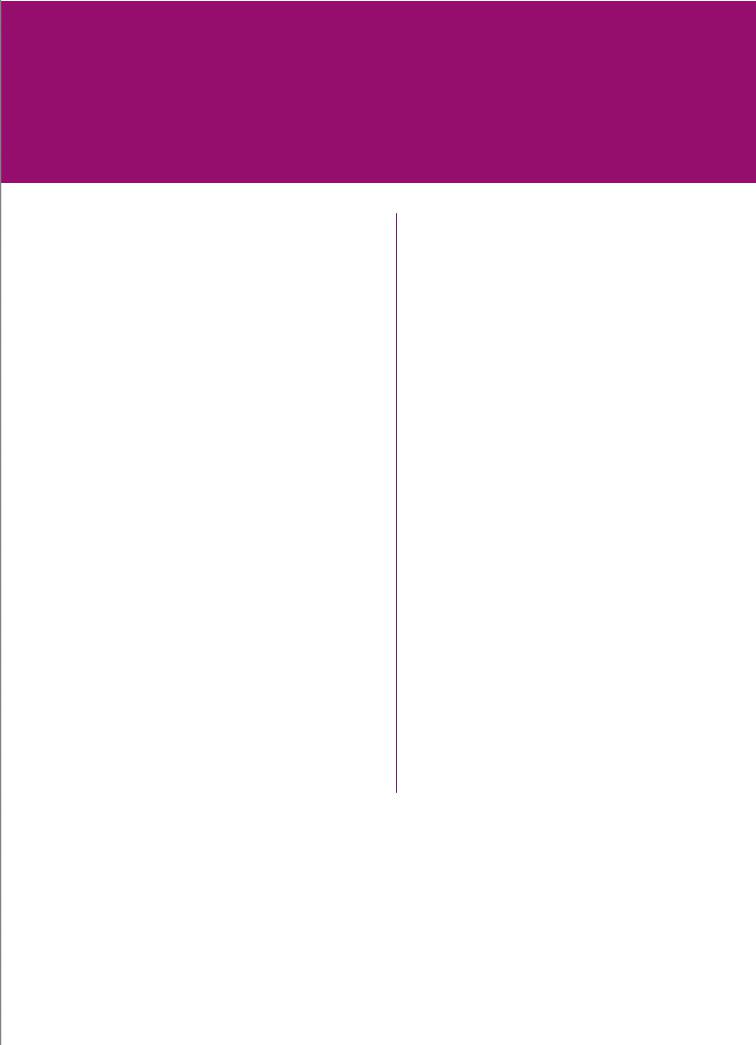
vk.com/id446425943
GLOSSARY
Carbon footprint:
Carbon footprint provides a measure of the total amount of carbon dioxide emissions (or other greenhouse gas emissions in carbon equivalent) directly and indirectly caused by an activity or accumulated over the life stages of a product.
Carbon labelling:
Carbon labelling provides information on the carbon dioxide emissions (or other greenhouse gas emissions in carbon equivalent) generated as a by-product of the manufacturing, transporting or disposing of a product. The labelling system is intended to encourage behaviour that would contribute to a reduction in greenhouse gas emissions.
Carbon leakage (also known as Emissions leakage):
A shift in CO2 emissions away from countries taking stringent GHG mitigation actions towards countries taking less stringent or no mitigation actions.
Climate-smart agriculture (CSA):
Agriculture that sustainably increases productivity, resilience (adaptation); reduces/removes GHGs (mitigation); and enhances achievement of national food security and development goals.
Decoupling:
In the context of agricultural support policies, decoupling refers to support given to eligible recipients that is not linked to prices or production decisions, and thus has no or minimal distorting effect on the type or volume of agricultural production.
Emissions:
See GHGs.
Emissions efficiency:
Emissions per unit of output.
Emissions misallocation:
Emissions misallocation refers to the outcome of carbon leakage when the overall impact at the global level is negative.
Emissions reallocation:
Emissions reallocation refers to the outcome of carbon leakage when the overall impact at the global level is potentially positive.
Greenhouse gases (GHGs):
Greenhouse gases refer to carbon dioxide, nitrous oxide, methane, ozone, chlorofluorocarbons and other gases occurring either naturally or resulting from human (production and consumption) activities, and contributing to the greenhouse effect (global warming).
| 85 |

vk.com/id446425943
NOTES
1 World Trade Organization (WTO). 2017. World Trade Statistical Review 2017. Geneva, Switzerland.
2 Constantinescu, C., Mattoo, A. & Ruta, M. 2015. The Global Trade Slowdown: Cyclical or Structural. World Bank Policy Research Working Paper No. 7158. Washington, DC, IMF and World Bank.
3 For further information on tariff rates imposed on rice, see: Sekhar, C.S.C. 2018. Climate change and the rice economy in Asia: Implications for trade policy. SOCO 2018 Background Paper, Rome, FAO.
4 OECD. 2016. Evolving Agricultural Policies and Markets: Implications for Multilateral Trade Reform. Paris, OECD Publishing. In this case, trade-distorting support follows OECD definitions, which are not necessarily similar to what WTO regards as distorting.
5 IPCC. 2013. Climate change 2013: the physical science basis.
Contribution of Working Group I to the Fifth Assessment Report of the Intergovernmental Panel on Climate Change. Cambridge, UK, and New York, USA, Cambridge University Press.
6 IPCC. 2014. Climate change 2014: impacts, adaptation, and vulnerability. Contribution of Working Group II to the Fifth Assessment Report of the Intergovernmental Panel on Climate Change. Cambridge, UK, and New York, USA, Cambridge University Press.
7 Purola T., Lehtonen, H., Liu, X. & Palosuo, T. 2018. Production of Cereals in Northern Marginal Areas: An Integrated Assessment of Climate Change Impacts at the Farm Level. Agricultural Systems, 162(c): 191–204.
8 For the carbon dioxide fertilization effects on rice, see Sekhar, C.S.C. 2018. Climate change and the rice economy in Asia: Implications for trade policy. SOCO 2018 Background Paper, Rome, FAO.
9 Ahammad, H., Heyhoe, E., Nelson, G., Sands, R.D., Fujimori, S., Hasegawa, T., van der Mensbrugghe, D. et al. 2015. The Role of International Trade under a Changing Climate: Insights from Global Economic Modelling. In A. Elbehri, ed. Climate Change and Food Systems: Global Assessments and Implications for Food Security and Trade. Rome, FAO; Schmidhuber J. & Tubiello, F.N. 2007. Global Food Security under Climate Change. Proceedings of the National Academy of Sciences of the United States of America, 104(50): 19703–19708; Baldos, U.L.C. & Hertel, T.W. 2015. The Role of International Trade in Managing Food Security Risks from Climate Change. Food Security, 7(2): 275–90. https://doi.org/10.1007/s12571-015-0435-z.
10 FAO. 2016. The State of Food and Agriculture. Climate change, agriculture and food security. Rome; Campbell, B. M., Vermeulen, S. J., Aggarwal, P. K., Corner-Dolloff C., Girvetz E., Loboguerrero A. M., Ramirez-Villegas J., Rosenstock T., Sebastian L., Thornton,
P. K. & Wollenberg, E. 2016. Reducing Risks to Food Security from
Climate Change. Global Food Security, 11: 34–43, 2nd International Global Food Security Conference; Schmidhuber J. & Tubiello, F.N. 2007. Global Food Security under Climate Change.
Proceedings of the National Academy of Sciences of the United States of America, 104(50): 19703–19708.
11 Nelson, G.C., Valin, H., Sands, R.D., Havlik, P., Ahammad, H., Deryng, D., Elliott, J. et al. 2014. Climate Change Effects on Agriculture: Economic Responses to Biophysical Shocks.
Proceedings of the National Academy of Sciences of the United States of America, 111(9): 3274–79. https://doi.org/10.1073/ pnas.1222465110.
12 von Lampe, M., Willenbockel, D., Ahammad, H., Blanc, E., Cai, Y., Calvin, K., Fujimori, S. et al. 2014. Why Do Global Long-Term Scenarios for Agriculture Differ? An Overview of the AgMIP Global Economic Model Intercomparison. Agricultural Economics, 45(1): 3–20. https://doi.org/10.1111/agec.12086.
13 Ahammad, H., Heyhoe, E., Nelson, G., Sands, R.D., Fujimori, S., Hasegawa, T., van der Mensbrugghe, D. et al. 2015. The Role of International Trade under a Changing Climate: Insights from Global Economic Modelling. In A. Elbehri, ed. Climate Change and Food Systems: Global Assessments and Implications for Food Security and Trade. Rome, FAO; OECD. 2015. The Economic Consequences of Climate Change. Paris, OECD Publishing. http://dx.doi.org/10.1787/9789264235410-en.
14 Havlík, P., Valin, H., Gusti, M., Schmid, E., Leclère, D., Forsell, N., Herrero, M., et al. 2015. Climate Change Impacts and Mitigation in the Developing World. Policy Research Working Paper 7477. Washington, DC, World Bank. http://documents. worldbank.org/curated/en/866881467997281798/pdf/ WPS7477.pdf.
15 Nelson, G.C., Valin, H., Sands, R.D., Havlik, P., Ahammad, H., Deryng, D., Elliott, J. et al. 2014. Climate Change Effects on Agriculture: Economic Responses to Biophysical Shocks.
Proceedings of the National Academy of Sciences, 111(9): 3274– 79, https://doi.org/10.1073/pnas.1222465110.; von Lampe, M., Willenbockel, D., Ahammad, H., Blanc, E., Cai, Y., Calvin, K., Fujimori, S. et al. 2014. Why Do Global Long-Term Scenarios for Agriculture Differ? An Overview of the AgMIP Global Economic Model Intercomparison. Agricultural Economics, 45(1): 3–20. https://doi.org/10.1111/agec.12086.
16 von Lampe, M., Willenbockel, D., Ahammad, H., Blanc, E., Cai, Y., Calvin, K., Fujimori, S. et al. 2014. Why Do Global Long-Term Scenarios for Agriculture Differ? An Overview of the AgMIP Global Economic Model Intercomparison. Agricultural Economics, 45(1): 3–20, https://doi.org/10.1111/agec.12086; Ahammad, H., Heyhoe, E., Nelson, G., Sands, R.D., Fujimori, S., Hasegawa, T., van der Mensbrugghe, D. et al. 2015. The Role of International Trade under a Changing Climate: Insights from Global Economic Modelling. In A. Elbehri, ed. Climate Change and Food Systems: Global Assessments and Implications for Food Security and Trade. Rome, FAO; OECD. 2015. The Economic Consequences of Climate Change. Paris, OECD
| 86 |
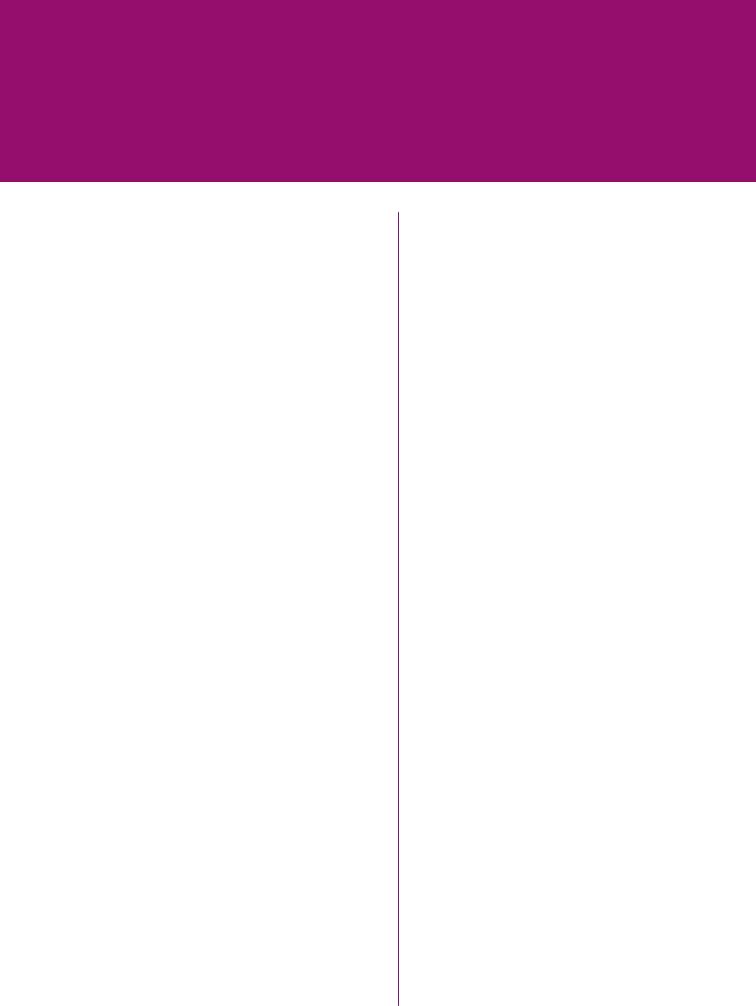
vk.com/id446425943
Publishing. http://dx.doi.org/10.1787/9789264235410-en; Havlík, P., Valin, H., Gusti, M., Schmid, E., Leclère, D., Forsell, N., Herrero, M. et al. 2015. Climate Change Impacts and Mitigation in the Developing World. Policy Research Working Paper 7477. Washington, DC, World Bank. http://documents.worldbank.org/ curated/en/866881467997281798/pdf/WPS7477.pdf; Blanco, M., Ramos, F., Van Doorslaer, B., Martínez, P., Fumagalli, D., Ceglar, A., Fernández, F.J. et al. 2017. Climate Change Impacts on EU Agriculture: A Regionalized Perspective Taking into Account MarketDriven Adjustments. Agricultural Systems, 156(c): 52–66, https://doi. org/10.1016/j.agsy.2017.05.013; Baldos, U.L.C, and Hertel, T.W. 2015. The Role of International Trade in Managing Food Security Risks from Climate Change. Food Security, 7(2): 275–90, https://doi.org/10.1007/s12571-015-0435-z.
17 Porfirio L.L., Newth, D., Cai, Y. & Finnigan, J.J. 2017. Economic shifts in agricultural production and global trade from climate change
– Technical Report. CSIRO Climate Science Centre; Oceans & Atmosphere Business Unit, Australia.
For further information on agricultural trade and climate change, please see: Zimmermann, A., Benda, J., Webber, H. & Jafari, Y. 2018. Trade, food security and climate change: conceptual linkages and policy implications. SOCO 2018 Background Paper, Rome, FAO; Hertel T. W. 2018. Climate change, agricultural trade and global food security. SOCO 2018 Background Paper, Rome, FAO.
18 Wiebe, K., Lotze-Campen, H., Sands, R., Tabeau, A., van der Mensbrugghe, D., Biewald, A., Bodirsky, B. et al. 2015. Climate Change Impacts on Agriculture in 2050 under a Range of Plausible Socioeconomic and Emissions Scenarios. Environmental Research Letters, 10(8), https://doi.org/10.1088/17489326/10/8/085010.
19 Stevanovic‘, M., Popp, A., Lotze-Campen, H., Dietrich, J.P., Müller, C., Bonsch, M., Schmitz, C. et al. 2016. The Impact of High-End Climate Change on Agricultural Welfare. Science Advances, 2(8): e1501452, https://doi.org/10.1126/sciadv.1501452.
20 Gouel, C., & Laborde, D. 2017. “The Crucial Role of International Trade in Adaptation to Climate Change.” Paper Presented at the International Technical Conference on Climate Change, Agricultural Trade and Food Security. 16 November 2017.
21 Costinot A., Donaldson D., and Smith C. Evolving Comparative Advantage and the Impact of Climate Change in Agricultural Markets: Evidence from 1.7 Million Fields around the World.
Journal of Political Economy, 124(1): 205–48, https://doi. org/10.1086/684719.
22 Stevanovic‘, M., Popp, A., Lotze-Campen, H., Dietrich, J.P., Müller, C., Bonsch, M., Schmitz, C. et al. 2016. The Impact of High-End Climate Change on Agricultural Welfare. Science Advances, 2(8): e1501452, https://doi.org/10.1126/sciadv.1501452.
23 Baldos, U.L.C, and Hertel, T.W. 2015. The Role of International Trade in Managing Food Security Risks from Climate Change. Food Security, 7(2): 275–90, https://doi.org/10.1007/s12571-015-0435-z.
24 Huang, H., von Lampe, M., & van Tongeren, F. 2011. Climate Change and Trade in Agriculture. Food Policy, 36(1): S9–S13, https://doi.org/10.1016/j.foodpol.2010.10.008.
25 Schmitz, C., Kreidenweis, U., Lotze-Campen, H., Popp, A., Krause, M., Dietrich, J.P. & Müller, C. 2015. Agricultural Trade and Tropical Deforestation: Interactions and Related Policy Options. Regional Environmental Change, 15(8): 1757–72, https://doi.org/10.1007/s10113-014-0700-2.; Dellink, R., Hwang H., Lanzi E. & Chateau J. 2017. International trade consequences of climate change. OECD Trade and Environment Working Papers, 2017/01, OECD Publishing, Paris.
26 Elbehri, A., Elliott, J. & Wheeler, T. 2015. Climate Change, Food Security and Trade: An Overview of Global Assessments and Policy Insights. In A. Elbehri ed. Climate Change and Food Systems: Global Assessments and Implications for Food Security and Trade. Rome, FAO.
27 FAO. 2016. The State of Agricultural Commodity Markets 2015–16. Trade and Food Security: Achieving a Better Balance between National Priorities and the Collective Good. Rome.
28 Wageningen Economic Research. 2018. Climate Change and Global Market Integration: Implications for global economic activities, agricultural commodities and food security. SOCO 2018 Background Paper, Rome, FAO.
29 The discussion follows the geographically motivated country and region classification of MAGNET and not that of FAO. In addition, agricultural trade and production include all edible crops, livestock, processed food, and fish. Please see Wageningen Economic Research. 2018. Climate Change and Global Market Integration: Implications for global economic activities, agricultural commodities and food security. SOCO 2018 Background Paper, Rome, FAO.
30 See also Palazzo, A., Vervoort, J.M., Mason-D’Croz, D., Rutting, L., Havlik, P., Islam, S., Bayala, J. et al. 2017. Linking Regional Stakeholder Scenarios and Shared Socioeconomic Pathways: Quantified West African Food and Climate Futures in a Global Context. Global Environmental Change, 45: 227–242; Sultan, B. and Gaetani, M. 2016. Agriculture in West Africa in the Twenty-First Century: Climate Change and Impacts Scenarios, and Potential for Adaptation. Frontiers in Plant Science, 7: 1262; Phalkey, R.K., Aranda-Jan, C., Marx, S., Höfle, B. & Sauerborn, R. 2015. Systematic Review of Current Efforts to Quantify the Impacts of Climate Change on Undernutrition. Proceedings of the National Academy of Sciences of the United States of America, 112(33): E4522–9.
31 Knox, J., Hess, T., Daccache, A. & Wheeler, T. 2012. Climate Change Impacts on Crop Productivity in Africa and South Asia.
Environmental Research Letters, 7(3).
32 Sánchez M. V. 2018. Climate Impact Assessments with a Lens on Inequality. Journal of Environment and Development. (Available at: https://doi.org/10.1177/1070496518774098.)
| 87 |
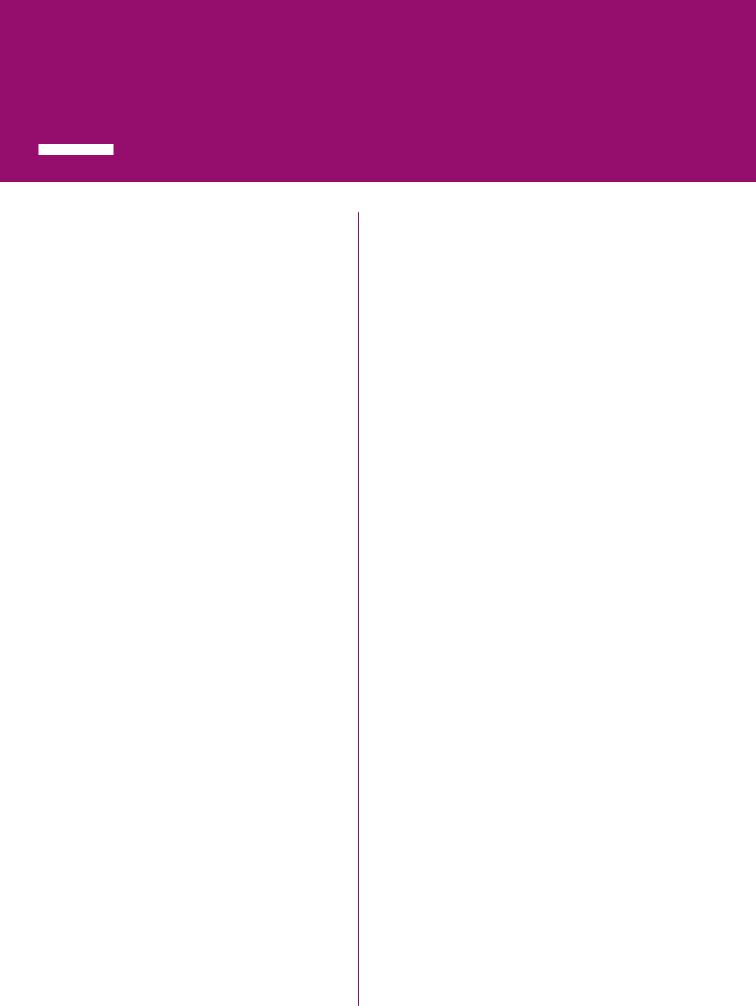
vk.com/id446425943
NOTES
33 Islam, S., Cenacchi, N., Sulser, T.B., Gbegbelegbe, S., Hareau, G., Kleinwechter, U., Mason-D‘Croz, D. et al. 2016. Structural Approaches to Modeling the Impact of Climate Change and Adaptation Technologies on Crop Yields and Food Security. Global Food Security, 10: 63–70, https://doi.org/10.1016/j.gfs.2016.08.003.
34 Net exports are defined as exports minus imports. Net exports increase if exports increase and/or imports decrease. A 1 percent decline in net exports is equivalent to a 1 percent increase in net imports. For example, the Rest of South America is projected to remain a net exporting region but will experience a decline in its net exports mainly due to an increase in imports (see Figure 2.3). Thus, its net trade position as a net exporter will weaken. Net imports are defined as imports minus exports. Net imports increase if exports decrease and/or imports increase. For example, India’s net trade position as an importer is estimated to deepen due to an increase in imports and a decrease in exports. The Russian Federation and the Caucasus, a net food importing region, is projected to increase its net exports, remaining a net food importer but softening its trade position as a net importer.
35 This part discusses some relevant points related to climate change actions and the WTO. A more comprehensive analysis can be found at WTO/UNEP. 2009. Trade and Climate Change. Geneva, WTO Publications.
36 Since then the United States of America announced its withdrawal from the Paris Agreement and ceased the implementation of its current nationally determined contribution, but affirmed its strong commitment to an approach that lowers emissions while supporting economic growth and improving energy security needs (G20 Leaders’ Declaration: Shaping an Interconnected World, July 8 2017, Hamburg).
37 That is: “Annex I,” consisting of industrialized countries and “economies in transition”; and “non-Annex I” countries. It also reflects the shift in economic power whereby many of the countries considered under the “developing country” category under the Convention’s old annexes are considered among the world’s largest economies today.
38 UNFCCC. 1992. Article 3(1) and Article 4(1).
39 FAO. 2016a. The agricultural sectors in nationally determined contributions (NDCs): Priority areas for international support. Rome.
40 Paris Agreement Article 4.2
41 Paris Agreement Article 4.4; Article 9 paragraphs 1, 3, 5, 6.
42 FAO, 2016b. The agriculture sectors in the Intended Nationally Determined Contributions: Analysis, by Strohmaier, R., Rioux, J., Seggel, A., Meybeck, A., Bernoux, M., Salvatore, M., Miranda, J. & Agostini, A. Environment and Natural Resources Management Working Paper No. 62. Rome.
43 The Intended Nationally Determined Contributions (INDCs) were submitted by Parties to the UNFCCC ahead of the COP21 and formed the basis of the Paris Agreement. They will become the first NDCs unless otherwise specified by the countries. See also FAO 2016b, p.5.
44 FAO. 2016b. Data used: FAOSTAT Emissions database, publicly available from: http://faostat3.fao.org/download/E; total agricultural emissions refer to the year 2014.
45 FAO 2016b, p.13.
46 Zimmermann, A., Benda, J., Webber, H. & Jafari, Y. 2018.
Trade, food security and climate change: conceptual linkages and policy implications. SOCO 2018 Background Paper, Rome, FAO.
47 Häberli, C. 2018. Potential Conflicts Between Agricultural Trade Rules and Climate Change Treaty Commitments. SOCO 2018 Background Paper, Rome.
48 Brandi, C. 2017. Trade Elements in Countries’ Climate Contributions under the Paris Agreement. Geneva. International Centre for Trade and Sustainable Development (ICTSD)
49 FAO. 2018. Koronivia Joint Work on Agriculture: Summary of Submissions. Paper Preview. Rome. http://www.fao.org/3/ I9302EN/i9302en.pdf
50 UNFCCC/IPCC. 2017. COP agenda item 4, Informal note by the Presidencies of COP 22 and COP 23. Talanoa dialogue Approach. 16 November 2017. https://unfccc.int/sites/default/ files/approach_to_the_talanoa_dialogue.pdf
51 GATT XX: I(a)
52 GATT XX: I(b)
53 GATT XX: I(g)
54 Chapeau of Article XX
55 The Preamble of the Marrakesh Agreement establishing the WTO, expressly refers to “allowing for the optimal use of the world’s resources in accordance with the objective of sustainable development, seeking both to protect and preserve the environment and to enhance the means for doing so in a manner consistent with their respective needs and concerns at different levels of economic development”.
56 The Appellate Body cited the Report of the Working Party on Border Tax Adjustments, BISD 18S/97, para. 18. The same test was used in Appellate Body Report, Canada — Periodicals, pp. 21–22, and in many other cases. It is also worth noting that “likeness” has been defined in the same way under Articles II:2 and III:4 GATT (cf. Appellate Body Report, Thailand — Cigarettes (Philippines), para. 116).
| 88 |
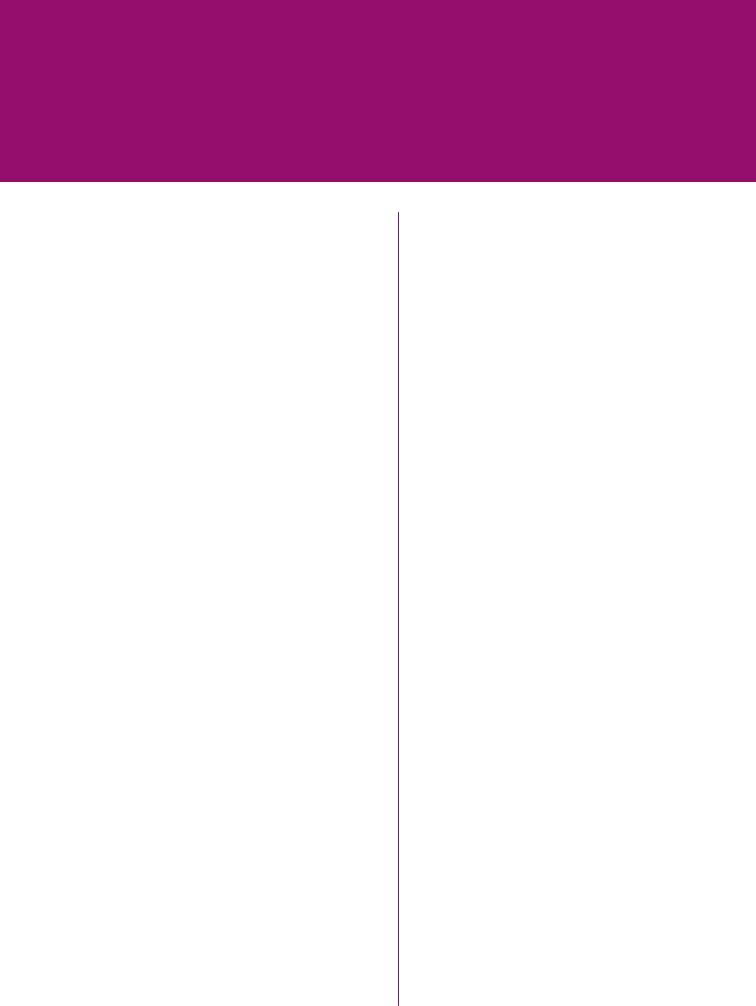
vk.com/id446425943
57 Appellate Body Report, EC — Asbestos, paras. 100–103.
58 Brandi. 2017. Also referring to differing scholarly interpretations by Low, P., Marceau, G. & Reinaud, J. 2011. The Interface between the Trade and Climate Change Regimes: Scoping the Issues. Staff Working Paper, Economic Research and Statistics Division, WTO, Geneva; Grubb, M., Hawkins, S., Jegou, I., Guei, F., Petrick, S., Villanueva, A., Lindner, S., Crawford-Brown, D. & Emmert, S. 2015. “A Report on the Political, Legal and Administrative Feasibility of Measures.” Carbon-CAP.
59 In the Preamble to the Marrakesh Agreement Establishing the WTO.
60 A number of rulings in respect of measures taken for the protection of public health or the environment have confirmed the scope for WTO Members to pursue these objectives at the level that they consider appropriate, provided that this does not lead to arbitrary or unjustifiable discrimination or a disguised restriction to trade. (For examples, please see: WTO/UNEP. 2009. Trade and Climate Change. Geneva, WTO Publications).
61 The ruling in another fossil fuel case was still pending at the time of writing: DS476 EC — Energy Package which directly challenges EU subsidizing programmes on gas. According to the WTO website, the panel report is about to be published.
62 The Panels – typically composed of three, and exceptionally five, experts – adjudicate on disputes between WTO members in the first instance. The Appellate Body (AB) consists of seven members that hear appeals from reports issued by panels. The AB can uphold, modify or reverse the legal findings and conclusions of a panel. AB Reports, once adopted by the Dispute Settlement Body (DSB), must be accepted by the parties to the dispute.
63 According to the Understanding on Rules and Procedures Governing the Settlement of Disputes (DSU), Article 3.2, the rulings and recommendations of the DSB serve only ‘to clarify the existing provisions of those agreements’ and ‘cannot add to or diminish the rights and obligations provided in the covered agreements.’
64 The General Council Decision of 6 December 2005 (WT/L/641 dated 8 December 2005) ‘Amendment of the TRIPS Agreement’ introduced an amendment allowing importing developing and least-developed countries facing public health problems and lacking the capacity to produce drugs generically to seek such medicines from third country producers under “compulsory licensing” arrangements.
65 Cf. Article IX of the Marrakesh Agreement Establishing the World Trade Organisation (the ‘WTO Agreement’); the Guiding Principles to be followed in considering applications for waivers adopted on 1 November 1956 (BISD 5S/25); the Understanding in Respect to Waivers of Obligations under the General Agreement on Tariffs and Trade 1994; and Decision-Making Procedures under Articles IX and XII of the WTO Agreement agreed by the General Council (WT/L/93).
66 Kimberley Process Certification Scheme for Rough Diamonds. General Council Waiver Decision of 15 December 2006, WTO Document WT/L/676, dated 19 December 2006. The waiver has been extended until 31 December 2018 by a decision of the General Council, dated 11 December 2012 (WTO Document WT/L/876, dated 14 December 2012).
67 UNFCCC/IPCC. 2017. Draft Decision on Issues relating to agriculture. Document FCCC/SBSTA/2017/L.24/Add.1, dated 14 November 2017.
68 FAO. 2017. Climate-Smart Agriculture Sourcebook. Rome, FAO (available at: http://www.fao.org/climate-smart-agriculture- sourcebook/en); FAO. 2010. “Climate-Smart” Agriculture: Policies, Practices, and Financing for Food Security, Adaptation and Mitigation. Rome (available at: http://www.fao.org/docrep/013/ i1881e/i1881e00.pdf).
69 Glauber, J. & Westhoff, P. 2015. The 2014 Farm Bill and the WTO. American Journal of Agricultural Economics, 97(5).
70 FAO/OECD. 2014. OECD-FAO Agricultural Outlook 2014–
2023. Paris, OECD Publishing.
71 Blandford, D., Gaasland, I. & Vårdal, E. (forthcoming). Greenhouse gas emissions, land use and food supply under the Paris Climate Agreement – policy choices in Norway. Applied Economic Perspectives and Policy.
72 FAO. 2015. Statistical Pocketbook: World Food and
Agriculture. Rome, FAO.
73 Druilhe, Z. & Barreiro-Hurlé, J. 2012. Fertilizer subsidies in Sub-Saharan Africa. Agricultural Development Economics Division Working Paper. FAO.
74 Byerlee, D., Kelly, V. A., Kopicki, R.J. & Morris, M. 2007.
Fertilizer Use in African Agriculture: lessons learned and good practice guidelines. Washington, DC, World Bank.
75 FAO. 2012. Developing a climate-smart agriculture strategy at the country level: Lessons from recent experience. Background Paper for the Second Global Conference on Agriculture, Food Security and Climate Change, Hanoi, Viet Nam, 3–7 September 2012 (available at: http://www.fao.org/docrep/016/ap401e/ ap401e.pdf).
76 Total Factor Productivity (TFP) is the portion of output not explained by the amount of inputs used in production. As such, its level is determined by the efficiency and intensity of the inputs – TFP growth is attributed to technical change and improved management.
77 UN Women. 2018. UN Women. Climate-smart agriculture paving the way for women’s empowerment in Mali and Malawi. [Cited 01 May 2018] http://www.unwomen.org/en/news/ stories/2018/3/news-csw62-climate-change-adaptation-strategies
| 89 |
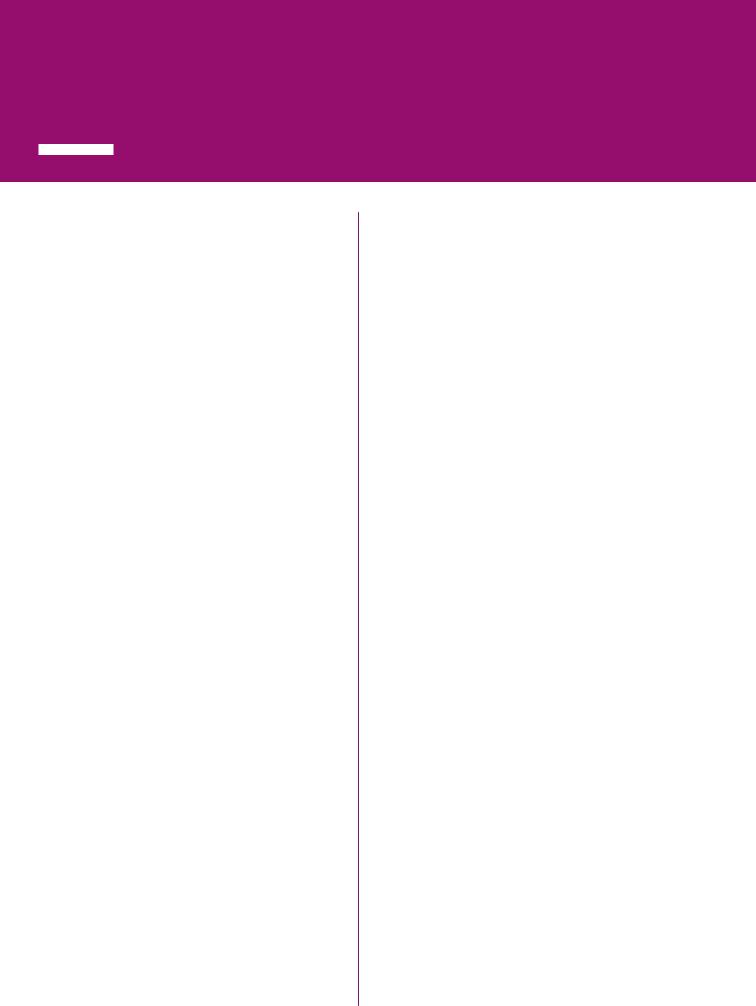
vk.com/id446425943
NOTES
78 Conservation Agriculture Scaling Up Project (CASU) is being implemented by FAO and financed by the European Union (EU), via the Tenth European Development Fund (EDF). (https://ec. europa.eu/europeaid/projects/conservation-agriculture-scaling- project-casu_en)
79 The Conservation Agriculture Carbon Offset Consultation, organized by FAO and the Conservation Technology Information Center, 28–30 October 2008 (http://www.fao.org/agriculture/ crops/thematic-sitemap/theme/climatechange0/conservation- agriculture/en/).
80 FAO. 2016. Mid-term evaluation of the Conservation Agriculture Scaling-up (CASU) project. FAO Office of Evaluation, June.
81 Ontario Ministry of Agriculture, Food and Rural Affairs. [Cited 01 May 2018] http://www.omafra.gov.on.ca/english/livestock/ dairy/facts/greenhousegas.htm
82 Nkhoma, S., Kalinda, T. & Kuntashula, E. 2017. Adoption and Impact of Conservation Agriculture on Smallholder Farmers’ Crop Productivity and Income in Luapula Province, Zambia. Journal of Agricultural Science, 9(9). Canadian Center of Science and Education.
83 Alston, J. 2010. The Benefits from Agricultural Research and Development, Innovation, and Productivity Growth. OECD Food, Agriculture and Fisheries Working Papers No. 31, OECD Publishing. http://dx.doi.org/10.1787/5km91nfsnkwg-en
84 FAO. 2012. The State of Food and Agriculture: Investing in Agriculture for a Better Future. Rome (available at: http://www.fao. org/3/a-i3028e.pdf)
85 Fuglie, K.O. 2012. Productivity Growth and Technology Capital in the Global Agricultural Economy. In K.O. Fuglie, S.L. Wang, & V.E. Ball, eds. Productivity Growth in Agriculture: An International Perspective, Oxfordshire, UK, CAB International.
86 IPCC. 2014. Climate Change 2014: Impacts, Adaptation and Vulnerability. Contribution of Working Group II to the Fifth Assessment Report of the Intergovernmental Panel on Climate Change. Cambridge, Cambridge University Press. Chapter 7: Food security and food production systems.
87 Moral hazard occurs when purchasers of insurance change their behaviour to increase the likelihood of collecting payments. Adverse selection arises when risks vary across insurance buyers. Those with high risks of loss are more likely to purchase insurance than those that face lower risks, thereby increasing the probability that insurance providers will lose money. See also Kalra, A. 2013. “Partnering for Food Security in Emerging Markets.” Sigma 1. Geneva. SwissRe. Accessed at http://media.swissre.com/ documents/sigma1_2013_en.pdf.
88 Mahul, O. & Stutley, C.J. 2010. Government Support to Agricultural Insurance Challenges and Options for Developing Countries. Washington, DC, World Bank.
89 Congressional Budget Office .2017. Baseline for Farm Programs. June.
90 Greatrex H., Hansen, J.W., Garvin, S., Diro, R., Blakeley, S., Le Guen, M., Rao, K.N. & Osgood, D.E. 2015. Scaling up index insurance for smallholder farmers: Recent evidence and insights.
CCAFS Report No. 14. CGIAR Research Program on Climate Change, Agriculture and Food Security (CCAFS). University of Copenhagen, Denmark.
91 Glauber, J.W. 2012. The Growth of the Federal Crop Insurance Program, 1990–2011. American Journal of Agricultural Economics, 95(2): 482–88.
92 See Wu, J. & R. Adams. 2001. Production risk, acreage decisions and implications for revenue insurance programs.
Canadian Journal of Agricultural Economics 49(1):19–35; and, Yu, J., Smith, A. & Sumner, D. forthcoming. Effects of Crop Insurance Premium Subsidies on Crop Acreage. American Journal of Agricultural Economics.
93 World Bank. 2012. Using public food grain stocks to enhance food security. Report 71280-GLB. Washington, DC, World Bank.
94 For a discussion on public stockholding and its effects see Glauber, J.W. 2018. Domestic support measures in the context of adaptation and mitigation to climate change. SOCO 2018 Background Paper, Rome, FAO; Kornher, L. 2018. The market of maize in Eastern and Southern Africa in the context of climate change. SOCO 2018 Background Paper, Rome, FAO; and, Sekhar, C.S.C. 2018. Climate change and the rice economy in Asia: Implications for trade policy. SOCO 2018 Background Paper, Rome, FAO.
95 See for example, Balisacan, A., Sombilla, M. & Dikitanan, R. 2010. Rice crisis in the Philippines: Why did it occur and what are its policy implications? In D. Dawe, ed. The Rice Crisis: Markets, Policies and Food Security. London, FAO and Earthscan.
96 In line with a decision reached at the Ninth Ministerial Conference in Bali, Indonesia, a number of activities were added to that category to cover programmes that are particularly relevant for developing countries. These included programmes relating to land reform and rural livelihood security, such as: land rehabilitation; soil conservation and resource management; drought management and flood control; rural employment programmes; issuance of property titles; and farmer settlement programmes.
97 Branca, G., Tennigkeit, T., Mann, W. & Lipper, L. 2012.
Identifying opportunities for climate-smart agriculture investments in Africa. Economics and Policy Innovations for Climate-smart Agriculture (EPIC), Rome, FAO.
| 90 |
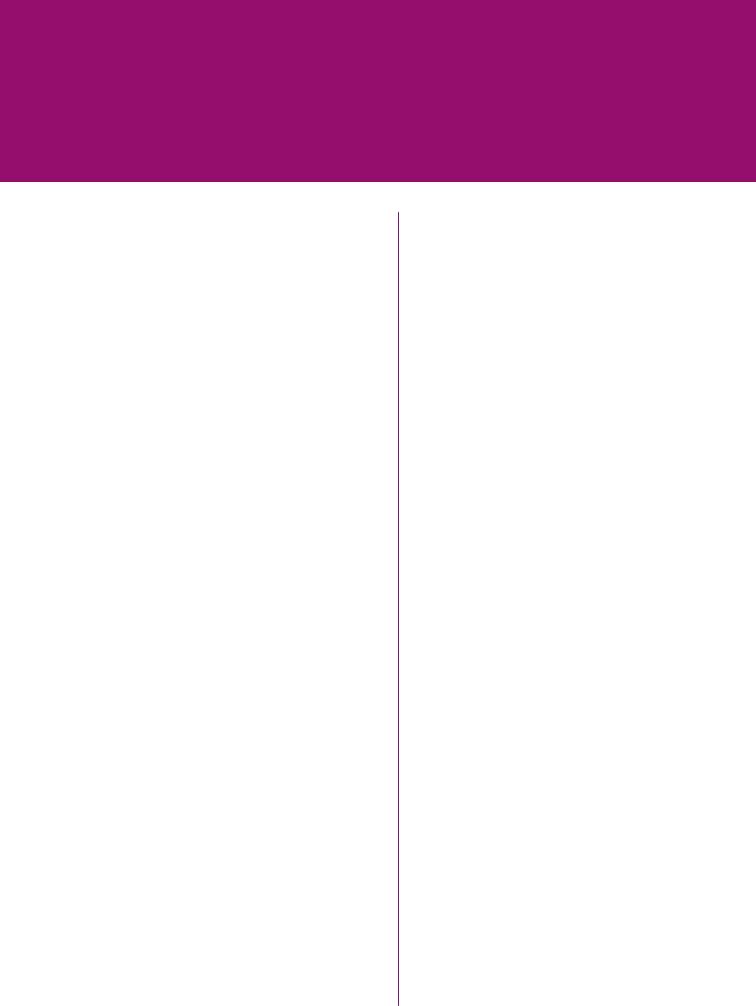
vk.com/id446425943
98 The terms carbon tax and carbon pricing are used, instead of GHG tax and pricing that would be more appropriate in discussions on agriculture, in order to align with the terminology of a vast literature on the subject.
99 Since various gases are involved, the size of the tax would be based on the type of gas emitted and its global warming potential. The impact of a GHG on global temperature depends on its ability to absorb and re-emit heat. Carbon dioxide is used as the standard of comparison; equivalents for other GHGs are calculated on their warming potential relative to CO2. GHGs remain in the atmosphere for different periods of time. Calculations of the carbon dioxide equivalents of gases are based on their global warming potential (GWP) over a given period of time (typically 100 years) as nitrous oxide and methane have different GWP.
100 For further information on domestic support measures in relation to adaptation and mitigation, please refer to Glauber, J.W. 2018. Domestic support measures in the context of adaptation and mitigation to climate change. SOCO 2018 Background Paper, Rome, FAO.
101 FAO. 2017. GIEWS Update Bangladesh: Severe floods in 2017 affected large numbers of people and caused damage to the agriculture sector, 3 October. http://www.fao.org/3/a-i7876e.pdf
102 Blandford, D. 1983. Instability in World Grain Markets.
Journal of Agricultural Economics 34(3): 379–395.
103 For more information, see FAO. 2017. The World Trade Organization (WTO) Agreement on Agriculture: Export Competition after the Nairobi Ministerial Conference. Trade Policy Brief No. 21, May.
104 FAO. 2017. The WTO Agreement on Agriculture: Export competition after the Nairobi Ministerial Conference. Trade Policy Briefs, No. 21, May.
105 For a discussion of counter-cyclical policy adjustments in Eastern and Southern Africa, see Kornher, L. 2018. The market of maize in Eastern and Southern Africa in the context of climate change. SOCO Background Paper, Rome, FAO.
106 This mechanism would be accessible to all developing countries, unlike the Special Agricultural Safeguards (SSGs) of the Uruguay Round Agreement on Agriculture, which was limited only to those countries and products subjected to tariffication, leaving many developing countries without recourse to the safeguards.
107 Morrison, J. & Mermigkas, G. 2014. Import Surges and the Special Safeguard Mechanism in a Changing Global Market Context. In R. Meléndez-Ortiz, C. Bellmann & J. Hepburn, eds. Tackling Agriculture in the Post-Bali Context. International Centre for Trade and Sustainable Development, Geneva, Switzerland.
108 FAO. 2014. Import surges and the Special Safeguard Mechanism revisited. Technical Note No. 15. FAO Trade Policy Technical Notes on issues related to the WTO negotiations on agriculture. In the analysis, a volume surge is identified when imports exceed a moving average of the previous three years plus a certain percentage above that average.
109 FAO. 2017. Agricultural export restrictions. Trade Policy Brief No. 27, October.
110 For a discussion on export bans see Kornher, L. 2018. The market of maize in Eastern and Southern Africa in the context of climate change. SOCO Background Paper, Rome, FAO; Sekhar, C.S.C. 2018. Climate change and the rice economy in Asia:
Implications for trade policy. SOCO Background Paper, Rome, FAO; and, Rapsomanikis, G. 2011. Price Transmission and Volatility Spillovers in Food Markets. In A. Prakash, ed. Safeguarding Food Security in Volatile Global Markets, Rome, FAO.
111 FAO. 2010. Management of Wide International Commodity Price Movements: National and International Experiences and Policy Responses. Committee on Commodity Problems 10/4. Rome.
112 Addressing the asymmetry between import and export disciplines was recommended by International Organizations to the G20 in their report on policy responses to international price volatility. See FAO, IFAD, IMF, OECD, UNCTAD, WFP, the World Bank, the WTO, IFPRI and the UN HLTF. 2011. Price Volatility in Food and Agricultural Markets: Policy Responses.
113 Here an example of a carbon tax and the subsequent increase in prices is used. Cap-and–trade schemes would have a similar result on prices, as emissions permit trading puts a price on carbon and implies a tax. Regulations that provide for production methods (like manure management) and increase production costs will also result in a price increase and would also imply a tax.
114 Paris Agreement, Article 6, paragraph 2.
115 See India etc. versus US: ‘shrimp-turtle’ (https://www.wto.org/ english/tratop_e/envir_e/edis08_e.htm).
116 Lubroth, J. 2012. Climate change and animal health. In: Building Resilience for Adaptation to Climate Change in the Agriculture Sector; Proceedings of an FAO/OECD Workshop, p. 63–70. Available at: http://www.fao.org/agriculture/crops/news- events-bulletins/detail/en/item/134976/
117 For further information on the impacts of climate change on plant and animal health and food safety, please refer to Lopian, R. 2018. Climate Change, Sanitary and Phytosanitary Measures and Agricultural Trade. SOCO 2018 Background Paper, Rome, FAO.
| 91 |
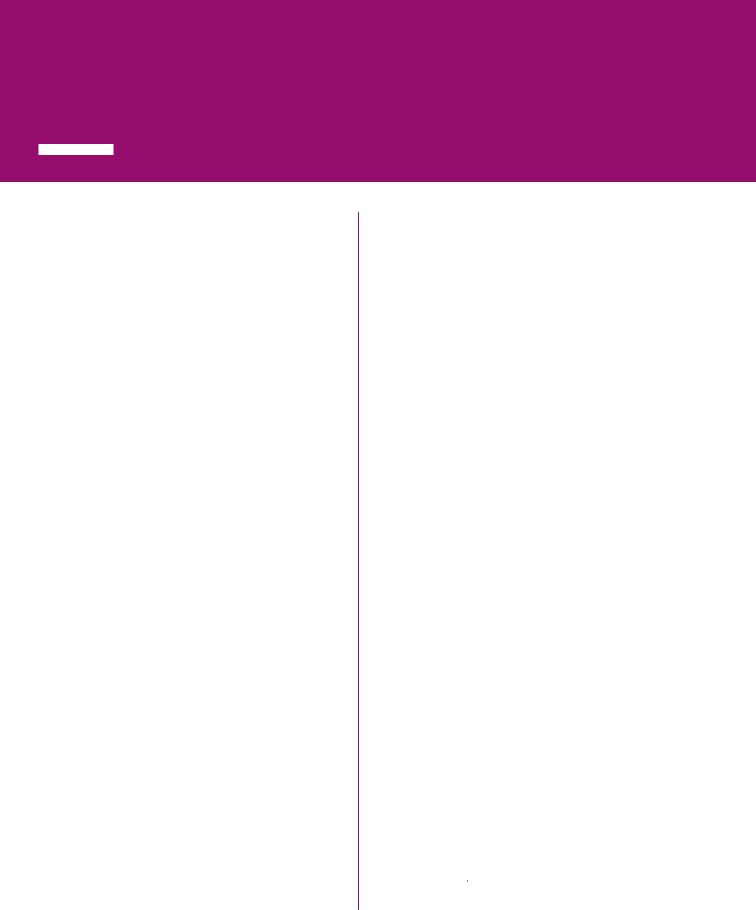
vk.com/id446425943
NOTES
118 Article 3 of the SPS Agreement provides that countries shall base their SPS measures as much as possible on the international standards, guidelines or recommendations (WTO, 1995), developed by OIE, IPPC and CODEX. The premise for this is that by applying internationally agreed standards, guidelines or recommendations, arbitrary or unjustified discrimination of trading partners will be automatically excluded.
119 WTO. 1995. The WTO Agreement on the Application of Sanitary and Phytosanitary Measures. Available at: https://www.wto.org/english/tratop_e/sps_e/spsagr_e.htm
120 STDF/World Bank. 2011. Climate Change and Trade: The Link to Sanitary and Phytosanitary Standards. Joint paper of the World Bank, Development Research Group, Trade and International Integration (DECTI) and the Standards and Trade Development Facility (STDF). Available at: http://www.standardsfacility.org/ sites/default/files/STDF_Climate_Change_EN_0.pdf
121 WTO. 1995. The WTO Agreement on the Application of Sanitary and Phytosanitary Measures. Available at: https://www. wto.org/english/tratop_e/sps_e/spsagr_e.htm
122 For further information on the capacity required for the implementation of SPS measures in light of climate change, see: Lopian, R. 2018. Climate Change, Sanitary and Phytosanitary Measures and Agricultural Trade. SOCO 2018 Background Paper, Rome, FAO.
123 IPCC. 2014a: Climate Change 2014: Impacts, Adaptation, and Vulnerability. Part A: Global and Sectoral Aspects. Contribution of Working Group II to the Fifth Assessment Report of the Intergovernmental Panel on Climate Change [Field, C.B., V.R. Barros, D.J. Dokken, K.J. Mach, M.D. Mastrandrea, T.E. Bilir, M. Chatterjee, K.L. Ebi, Y.O. Estrada, R.C. Genova, B. Girma, E.S. Kissel, A.N. Levy, S. MacCracken, P.R. Mastrandrea, and L.L. White (eds.)]. Cambridge University Press, Cambridge, United Kingdom and New York, NY, USA, 1132 pp.
124 de Balogh, K., Halliday, J. & Lubroth, J. 2013. Integrating the surveillance of animal health, foodborne pathogens and foodborne diseases in developing and in-transition countries. Revue scientifique et technique (International office of epizootonics). 32(2): 539–48.
125 Sutherst, R.W. 2008. Climate change and vulnerability to introductions by plant and animal pests and diseases. In FAO: Climate-related Transboundary Pests and Diseases. Technical Background Document from the Expert Consultation held on 25–27 February 2008, FAO, Rome. (Also available at: http://www.fao. org/3/a-ai785e.pdf).
126 See: http://www.oie.int/en/animal-health-in-the-world/the- world-animal-health-information-system/national-disease- contingency-plans/; see also: http://www.fao.org/docrep/004/ X2720E/X2720E00.HTM
127 For example: http://www.fao.org/3/a-ax460e.pdf
128 The Standards and Trade Development Facility (STDF) is a global partnership that helps developing countries to gain and maintain market access by tackling sanitary and phytosanitary (SPS) gaps, and promoting food safety, animal and plant health. Established by FAO, OIE, WHO, WTO and the World Bank Group, and including the Codex and IPPC Secretariats, the partnership works to support sustainable economic growth, poverty reduction, food security and environmental protection. The STDF provides a platform for international organizations, donors, SPS experts from developing countries and the private sector to come together to discuss SPS capacity building needs, share experiences and good practice, leverage additional funding, and work on coordinated and coherent solutions. Within the STDF, ground-breaking work has been done on relevant topics such as: (i) climate change and SPS risks; (ii) international trade and invasive alien species; (iii) public private partnerships to build SPS capacity; and (iv) facilitating safe trade, in the context of Annex C of the SPS Agreement (Control, Inspection and Approval procedures) and the Trade Facilitation Agreement. Publications, briefing notes and short film products, highlighting experiences and lessons and identifying good practice, are freely available on the STDF website. In addition, the STDF has provided funding for the development and implementation of 180+ collaborative and innovative SPS projects, assisting developing countries to meet international standards and access markets. Information on STDF projects is also available on the STDF website.
129 For more information: http://www.standardsfacility.org/sites/ default/files/STDF_Results_Factsheet_Final.pdf
130 See also: http://www.worldbank.org/en/news/press- release/2013/12/11/global-partnership-food-safety
131 Citation from Annex C 1(a) of SPS Agreement, WTO. 1995.
132 Sutherst, R.W. 2008. Climate change and vulnerability to introductions by plant and animal pests and diseases. In FAO: Climate-related Transboundary Pests and Diseases. Technical Background Document from the Expert Consultation held on 25–27 February 2008, FAO, Rome. (Also available at: http://www.fao. org/3/a-ai785e.pdf).
| 92 |
